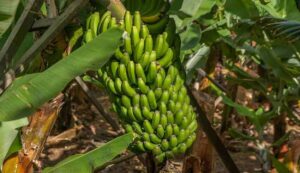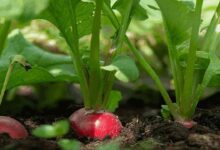Banana Farming: Do banana farming in this way and you will become rich in a few months
Banana Farming: Farmers are increasingly focusing on cash crops instead of commodities like maize and wheat, where the production of bananas greatly benefits the farmers. One cash crop that can be produced anywhere in the nation is the banana, which yields a solid revenue all year round. Because of its consistent demand in the market throughout the year, growing bananas is turning out to be a lucrative endeavor for farmers.

A hot, moderate environment is ideal for growing bananas. High rainfall and loamy, clay-loamy soil that is rich in organic matter and has adequate drainage are the optimum conditions for growing bananas. where the field’s soil has a pH of 6-7.5, which is ideal for growing bananas.
This is how the land should be
When growing bananas, soil selection is crucial. A nutrient-rich field should be chosen for this. In order to treat the field’s soil based on the results of the test, soil testing is crucial. The test will assist in addressing the nutritional deficit. Better banana output will result from this, and it will also assist in determining the soil’s health. When growing bananas, sandy soil is said to be highly beneficial. The land’s pH should be between 6 and 7.5 for this.
It cannot be grown in very acidic or alkaline soil. Waterlogging shouldn’t be an issue in areas where bananas are grown. Farmers should prepare ahead of time for water drainage in the field if this is the case. In addition, one should consider the airflow while choosing a field for banana growing. Better airflow is ideal for growing bananas.
These banana kinds are nice
Numerous improved kinds are available for growing bananas. The Robusta kind of Singaporean bananas is said to be the best for growing among them. More bananas are produced as a result. In addition, the banana species Salbhog, Alpan, Dwarf, Green Bark, and Basrai are regarded as nice.
This is how to prepare the banana field
To ensure that the green manure may be used in the field, green manure crops such as Lobia and Dhaincha should be produced prior to banana planting. It functions as soil fertilizer. The land should next be leveled and plowed two to four times in order to cultivate bananas. To break up the clay mounds in the field, a rotavator or harrow should be used to plow it. Give the earth a suitable slope. The basic dosage of FYM should be put into the soil during preparation and well mixed.
This is how you use fertilizer and manure
8.15 kg of Nadep compost manure, 150–200 grams of Neem cake, 250–300 grams of single superphosphate, 200 grams of nitrogen, and 200 grams of potash should be put into the excavated pits and filled with soil before the onset of the rainy season, which is in June. Banana seedlings should then be planted in the pre-dug trenches. Plants that are always fit and healthy should be chosen for this.
It’s time to put banana seedlings
Bananas may be grown year-round in poly houses using the tissue culture technique if drip watering is available. June and July are ideal months for Kharif agriculture in Maharashtra. During the Rabi season, October and November are the ideal times to sow banana seedlings.

